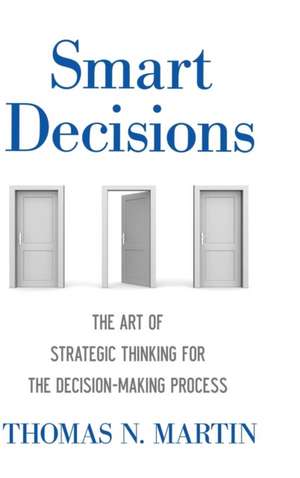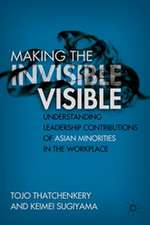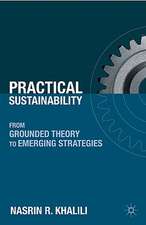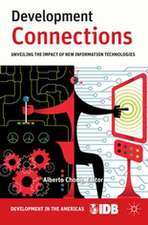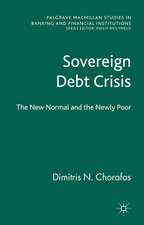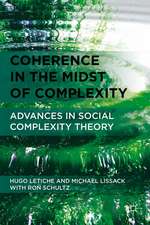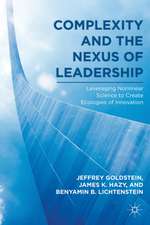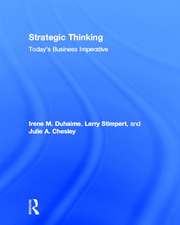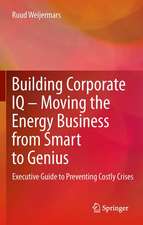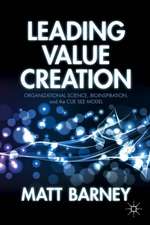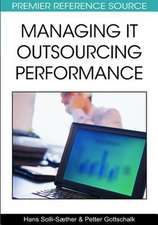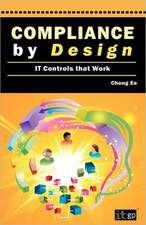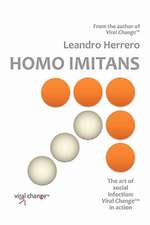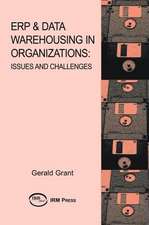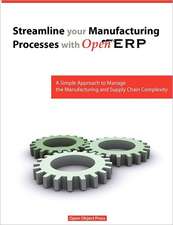Smart Decisions: The Art of Strategic Thinking for the Decision Making Process
Autor Thomas N. Martinen Limba Engleză Hardback – 5 ian 2016
In this book, Dr. Martin presents a thinking modification framework that asserts that in the decision-making process, there are three situational states — a current state, future state, and a transitional state that one must deliberate in finding a solution. For each of these situational states, Martin develops an identical five-step process to determine the best decision to make. The steps of this process include:
• Change-Needing Situational Analysis
• Challenge Framing & Causal Analysis
• Generating Solution Ideas
• Choosing a Solution Set
• Implementation and Aftermath Planning
This book will appeal to decision makers, leaders, and students of management who want a specific framework that details the process behind making strategic, well-informed decisions.
Preț: 255.97 lei
Nou
Puncte Express: 384
Preț estimativ în valută:
48.99€ • 53.19$ • 41.15£
48.99€ • 53.19$ • 41.15£
Carte disponibilă
Livrare economică 01-15 aprilie
Preluare comenzi: 021 569.72.76
Specificații
ISBN-13: 9781137536983
ISBN-10: 1137536985
Pagini: 185
Ilustrații: XVII, 185 p.
Dimensiuni: 155 x 235 x 20 mm
Greutate: 0.48 kg
Ediția:1st ed. 2016
Editura: Palgrave Macmillan US
Colecția Palgrave Macmillan
Locul publicării:New York, United States
ISBN-10: 1137536985
Pagini: 185
Ilustrații: XVII, 185 p.
Dimensiuni: 155 x 235 x 20 mm
Greutate: 0.48 kg
Ediția:1st ed. 2016
Editura: Palgrave Macmillan US
Colecția Palgrave Macmillan
Locul publicării:New York, United States
Cuprins
List of Figures
Preface
1. New Thinking Directions in Decision Making
2. Current, Future, And Transition Journey Situational Analysis
3. Challenge Framing and Causal Analysis
4. Generating Solution Ideas
5. Choosing a Solution Set
6. Implementation and Aftermath Planning
Preface
1. New Thinking Directions in Decision Making
2. Current, Future, And Transition Journey Situational Analysis
3. Challenge Framing and Causal Analysis
4. Generating Solution Ideas
5. Choosing a Solution Set
6. Implementation and Aftermath Planning
Recenzii
“Smart Decisions is a must read and can serve as a primary or supplemental text for undergraduate and graduate strategy, analytics, decision science, and quality/organizational improvement courses. Instructors will find this book of value and interest. Summing Up: Essential. Lower-division undergraduates through faculty.” (M. J. Safferstone, Choice, Vol. 54 (4), December, 2016)
Notă biografică
Dr. Thomas N. Martin, PhD is a Professor of Marketing and Management at the University of Nebraska at Omaha. His research interests include decision making, turnover and retention, and organizational management. He has been published in several publications, including Academy of Management Review, Journal of Vocational Behavior, Personnel Psychology, Human Relations, Organizational Dynamics, Business Process Management Journal, and Journal of Change Management.
Textul de pe ultima copertă
Today's world is complex and getting more so each day. Huge multinational corporations, international crisis and fast breaking events require most people to make decisions on a daily basis without the tools to understand the long term impact that today's decision might create. Because most people have never really been trained in how to make important complex decisions most people rely on experience, and 'gut reaction' which is okay for many decisions, but not okay for decision that will have meaningful impact on organizations and individual. Decision makers need to develop the art and science of strategic decision making. Here, Professor Thomas Martin explains the need for decision makers to modify their thinking about how they deal with acquiring and analyzing information in each of the decision-making process steps. This approach requiring thinking modification will lengthen the process, make it more complex, and to some more arduous, but the comprehensiveness of the new thinking approach should lead to improved and more effective decision making.
In this book, Dr. Martin presents a thinking modification framework that asserts that in the decision-making process, there are three situational states — a current state, future state, and a transitional state that one must deliberate in finding a solution. For each of these situational states, Martin develops an identical five-step process to determine the best decision to make. The steps of this process include:
• Change-Needing Situational Analysis
• Challenge Framing & Causal Analysis
• Generating Solution Ideas
• Choosing a Solution Set
• Implementation and Aftermath Planning
This book will appeal to decision makers, leaders, and students of management who want a specific framework that details the process behind making strategic, well-informed decisions.
In this book, Dr. Martin presents a thinking modification framework that asserts that in the decision-making process, there are three situational states — a current state, future state, and a transitional state that one must deliberate in finding a solution. For each of these situational states, Martin develops an identical five-step process to determine the best decision to make. The steps of this process include:
• Change-Needing Situational Analysis
• Challenge Framing & Causal Analysis
• Generating Solution Ideas
• Choosing a Solution Set
• Implementation and Aftermath Planning
This book will appeal to decision makers, leaders, and students of management who want a specific framework that details the process behind making strategic, well-informed decisions.
Caracteristici
The author has developed his own approach to systematic decision making which includes: Five Decision Making Process Steps First Process Step: ChangeNeeding Situational Analysis Second Process Step: Challenge Framing and Causal Analysis Third Process Step: Generating Solution Ideas Fourth Process Step: Choosing a Solution Set Fifth Process Step: Implementation and Aftermath Planning In addition he has created a cycle in which these steps should be implemented Seven Thinking Framework Elements Thinking Element 1: Preloaded or End State Outcome Expectations Thinking Element 2: Creative Thinking Divergent List Thinking Element 3: Inclusionary and Reduction Evaluation Criteria
